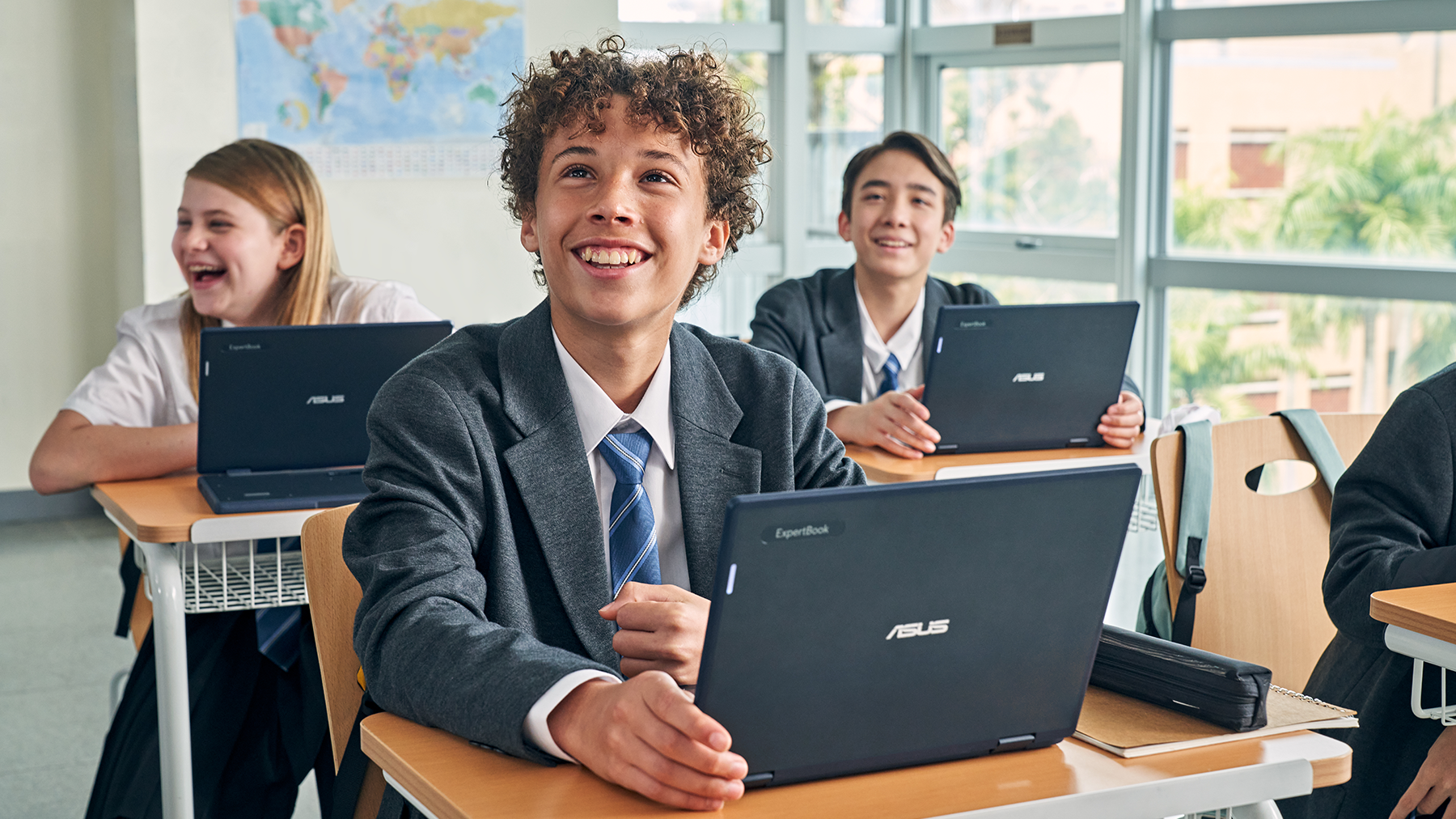
Modernising School Technology for Windows 11 and Beyond

A significant challenge confronts schools today: Windows 11’s stringent hardware requirements will leave many unable to upgrade their existing technology infrastructure.
As this operating system becomes the standard in workplaces, schools with older hardware are going to face difficult decisions that directly impact student learning outcomes and future readiness.
Windows 10 End of Support
After 14th October 2025, Microsoft will no longer provide free software updates for devices on Windows 10, including technical assistance or security fixes. Whilst old devices will still work, Windows 10 devices will be more vulnerable to security threats and malware, whilst having an increased cost for support.
This post considers the ‘digital divide’ and why schools need up-to-date hardware and operating systems to prepare students for their technology-driven futures.
The widening technology gap
Educational technology should connect students to future workplace environments, not create barriers to success. Yet as Windows 11 Pro becomes standard across industries, schools with older systems are going to unintentionally create a skills gap that will affect students once they enter the working world.
The transition to Windows 11 is more than an interface update. It marks a fundamental shift in how technology supports learning environments, bringing:
• Enhanced security frameworks
• AI-powered tools
• Collaboration capabilities that mirror current workplace requirements
Real implications for educational institutions
These changes have tangible implications for schools and colleges. Teachers and school leaders face several practical problems when using outdated systems:
1. Security vulnerabilities
Schools running outdated operating systems face increased exposure to cyber threats, possibly compromising sensitive student data and administrative systems. The latest software offers better protection against ransomware and sophisticated attacks targeting education.
2. Resource inefficiency
Maintaining ageing hardware requires disproportionate IT resources, taking budget from other critical educational needs. Schools using modern devices typically see reductions in long-term IT maintenance costs while gaining streamlined device management.
3. Student preparedness gaps
Students working exclusively on legacy systems enter work experience placements and employment at a disadvantage, needing additional training to use industry-standard tools and interfaces.
Ruggedised solutions for educational environments
The ASUS BR1100F, designed specifically for classrooms, addresses these challenges directly. Built to withstand daily school use, these devices feature military-grade durability while delivering the full capabilities of Windows 11 Pro.
With a tough design made to last, it includes a versatile touchscreen display and stylus1, a 360° hinge and a world-facing camera. It's protected with an all-round rubber bumper, spill-resistant keyboard and ultratough hinge. The BR1100F supports WiFi 62 and 4G LTE3 for fast connectivity, features AI-powered noise-cancelling technology for clear remote learning, and has a modular design for easy servicing.
Take a look at our full selection of laptops for students to see the range on offer.
Beyond hardware: The ecosystem advantage
The move to Windows 11 in schools extends beyond individual devices. The ASUS Windows 11 ecosystem offers 3 management solutions that help address any administrative challenges.
ASUS Control Center
Enables centralised device management across any school, making software deployment and security updates simpler.ASUS Business Manager
Streamlines administrative functions with customisable access controls designed for school contexts.Windows 11 Security Suite
Provides strong protection against cybersecurity threats targeting schools.These integrated management tools reduce administrative workload, allowing IT staff to focus on supporting teaching rather than constant maintenance.
Addressing implementation concerns
Schools often raise legitimate concerns about the Windows 11 transition. Here are our answers to the common questions we’ve been facing.
How can we meet Windows 11's hardware requirements with limited budgets?
ASUS Expert Series devices are specifically engineered to meet Windows 11 specifications while working within school budget constraints. These devices offer the necessary performance without breaking the bank, allowing schools to phase in upgrades strategically.What support is available for teachers who need to adapt to the new system?
ASUS Professional Development programmes provide training resources designed specifically for school environments. These include guided tutorials, ready-made lesson materials, and technical workshops that address the practical classroom use of Windows 11 features.Will our existing educational applications work with Windows 11?
The ASUS Business Solutions team offers dedicated support to ensure critical educational applications continue to work properly after upgrading. They can help assess compatibility of your current software and suggest solutions for any applications that might need updates.Bridging the digital divide
As workplaces increasingly require skills with AI-enhanced productivity tools, schools ought to be considering whether their technology properly prepares students for this reality. Windows 11's integrated AI capabilities, accessible through devices like the ASUS ExpertBook B5, give students hands-on experience with technologies they'll encounter in future workplaces.
According to a 2023 report from the Consortium for School Networking (CoSN), outdated technology creates barriers to student achievement and digital equity. Their research shows that students who regularly use current technologies at school demonstrate greater digital confidence when entering higher education and employment.
How ASUS can help with the Windows 11 changeover
The ASUS Education Solutions team offers assessment services to evaluate existing technology and develop implementation plans that work with educational goals and budgets.
By investing in Windows 11-ready devices now, schools don't just upgrade operating systems – they transform learning environments to reflect the technology students will use throughout their careers.
The question for school leaders isn't whether this transition should happen, but how quickly they can implement it to avoid widening the digital divide.
For more information about education-focused technology solutions, visit our Education Solutions page.
